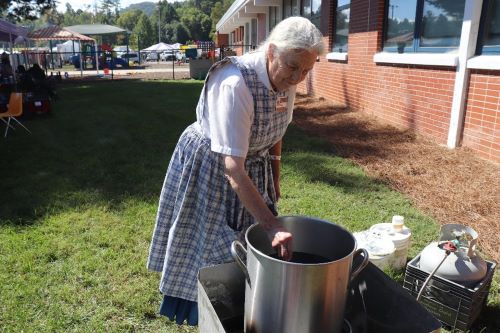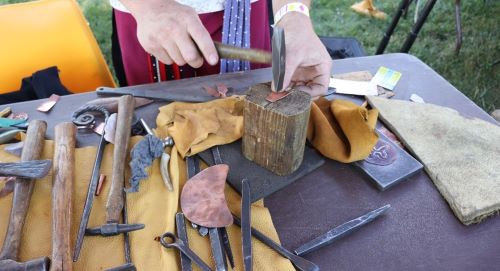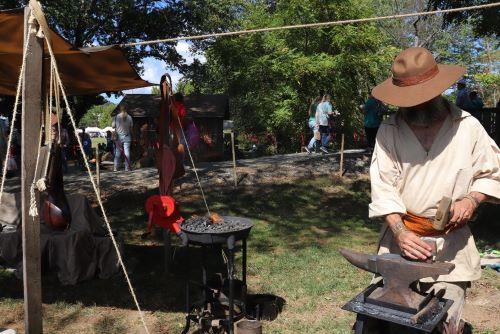
Mountain traditions such as natural dyeing, copper smiting and black smiting were alive and well at the 49th Mountain Heritage Day on Sept. 30.
The festival has been hosted by WCU since 1974. It features staples of local culture such as Cherokee stickball, blue grass, cloggers, and a plethora of crafters and art vendors. It is an opportunity for the community and visitors to celebrate the talents and folklife that bring vibrancy to the Blue Ridge. Throughout the festival grounds were heritage demonstrators who put on displays of crafts and trades that have been passed down through the generations of Appalachians.
Dede Styles, exhibited her dyeing techniques, as her friend Cassie Dickson spun yarn from sheep’s wool at the other end of their booth. Styles grew up in Buncombe county and still lives in the Swannanoa Mountains.
She has been working with natural dyes for more than 50 years. As a child, Styles watched women spinning wool into yarn at the Southern Highland Craft Guild events she attended with her grandmother. With plenty of observation and practice, she began spinning on an old Appalachian high wheel spinning wheel. She learned how to dye from a book after she watched someone dying wool with Queen Anne’s lace at a craft fair when as a young girl.
“The book I learned from just had a bunch of plants listed, but that was okay for me because I knew the plants. Now, a lot of people can’t use that book because they don’t know the plants. I eventually wrote a little book and it’s got pictures,” Styles explained.

Styles said all the dyes she uses are natural, and most of them are from native plants. Her colorful row of yarns were dyed using plants from black walnut to goldenrod. Next to the yarns were books she learned from, along with the book she wrote, “Wild Mountain Time: Native Dye Plants.”
A few stalls down from Styles and Dickson, Cherokee copper smith Nathan Bush was pounding away at small pieces of copper. He was fashioning the copper pieces into cones. Bush showed how the cone was traditionally shaped using a deer antler, but the modern technique uses a carbon steel hammer.
“You get a couple hundred of these together and it’s almost like a musical instrument,” Bush said.

The cones are used as ornaments on bags and clothing such as the jingle skirts that are worn for some styles of powwow dancing. As children began to crowd around the table, Bush put a fresh piece of copper on the shaping block and talked one of them through making a cone themselves.
Bush is a program coordinator for the Oconaluftee Indian Village, and learned copper smithing from his mentor William Rogers. Master craftsman Rogers received a grant from the North Carolina Arts Council several years ago that made the apprenticeship possible. Rogers and Bush, along with fellow apprentice James “JR” Wolfe, have committed to keeping the art alive through demonstrations and teaching. One of their most famous works, “Grandfather Buzzard” hangs in the Cherokee Indian Hospital today.
Matthew Shirey demonstrated another type of metal work at the other side of the festival. Shirey has been blacksmithing for about 20 years. What began with a weekend workshop at a local state park has grown into a well forged business. He launched Shira Forge in 2005 and makes everything form cookware to knives and axes.
“I got into the living history stuff, and then I really wanted a nice frontier style knife. They were all too expensive so I decided to learn how to make it myself,” Shirey said. Now a member of the American Bladesmith Society, he learned from institutions such as John C. Campbell Folk School and Penland School of Craft.

As he spoke about the challenges of making a good axe head, he stoked the flames of his forge and began hammering at the S hook he was working on.
The festival brimmed with the talent of the local community. Crafters and artisans illustrated their skills and dedication to their practice. Mountain Heritage Day provides an avenue for celebration, education, and the passing down of these traditions.


